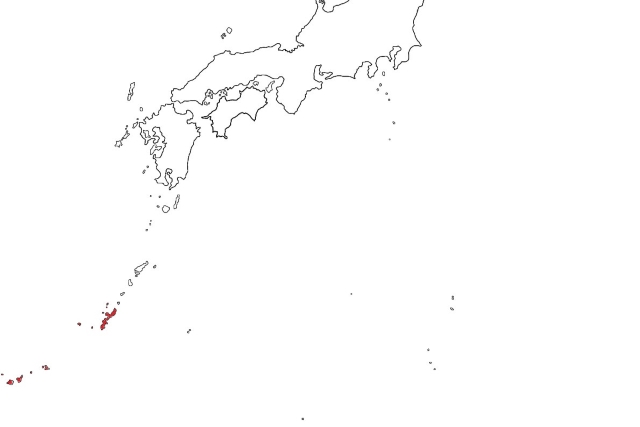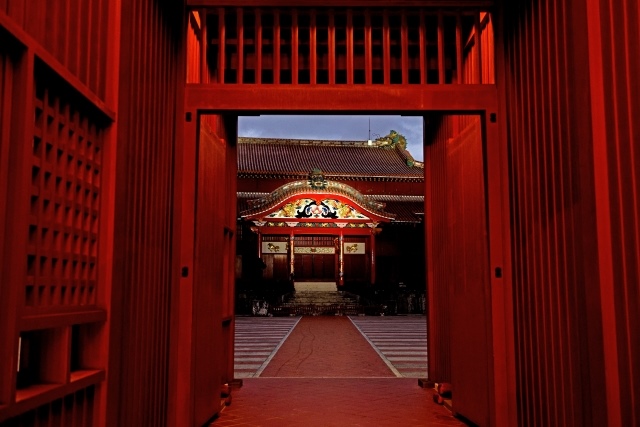1.Basic Information
Okinawa Prefecture has a unique culture and history from the era of the Ryukyu Kingdom and flourished through exchanges with Asian countries. Although it has a history of being a battleground during World War II, it is now known for beautiful beach resorts like the Kerama Islands and Miyakojima, making it a popular tourist destination.
Shuri Castle (Shurijyo)
Formerly the royal palace of the Ryukyu Kingdom, Shuri Castle was the center of Okinawan politics, culture, religion, and arts. It was destroyed during World War II and rebuilt in 1992 in a red-themed style. This restored version is based on styles from the 18th century onwards and was registered as a World Heritage Site in 2000. However, it suffered a major fire in 2019, and reconstruction efforts are still ongoing.
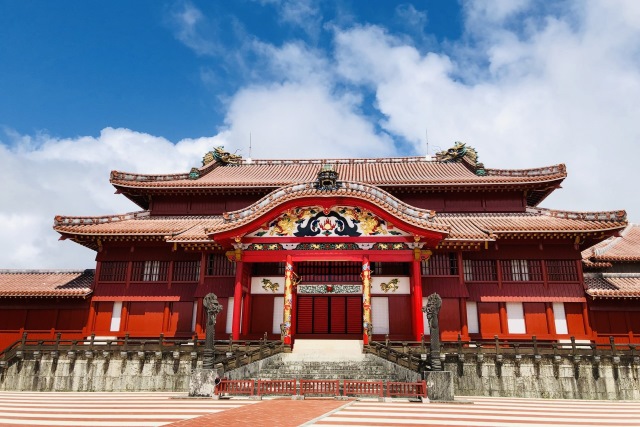
Tamaudon
Tamaudon is a mausoleum in Naha City, Okinawa, where successive kings of the Ryukyu Kingdom are entombed. Built in 1501 by the third king, Sho Shin, for his father, Sho En, the mausoleum is carved from natural rock and has a triangular-roofed house-shaped tomb. It’s divided into three chambers, and an adjacent museum introduces its history. Tamaudon is part of the World Heritage and is known as the largest royal tomb in Okinawa.
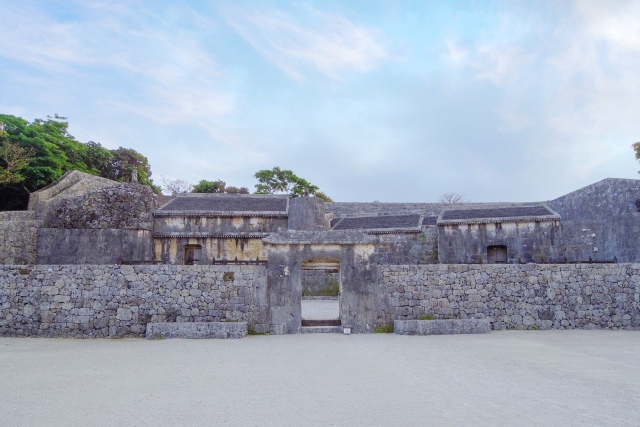
Himeyuri no Tou (Himeyuri Memorial Tower)
The Himeyuri student corps were medical teams of students and teachers from Okinawa Normal School and Okinawa First Girls’ High School, mobilized for medical support during the Battle of Okinawa in World War II. They were deployed to an Okinawa Army Hospital, and many perished during their retreat to the southern part of Okinawa Island. The Himeyuri Memorial Tower is a monument built on the site of the former Ihara Third Surgical Cave, commemorating their souls. The Himeyuri Peace Museum, opened in 1989, displays their belongings and testimonies, emphasizing the horrors of war and the importance of peace.
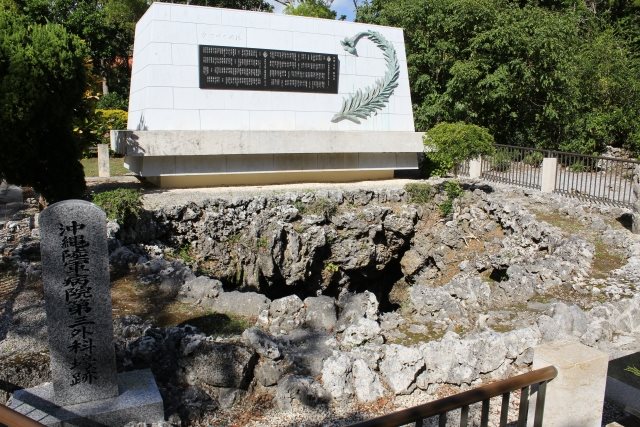
Manzamo
Manzamo, named for its ability to “accommodate 10,000 people sitting,” was praised by a Ryukyu king during a visit in the early 18th century. The area is characterized by vast natural grasslands on a Ryukyu limestone plateau and features a unique elephant trunk-shaped cliff, making it a popular photo spot.
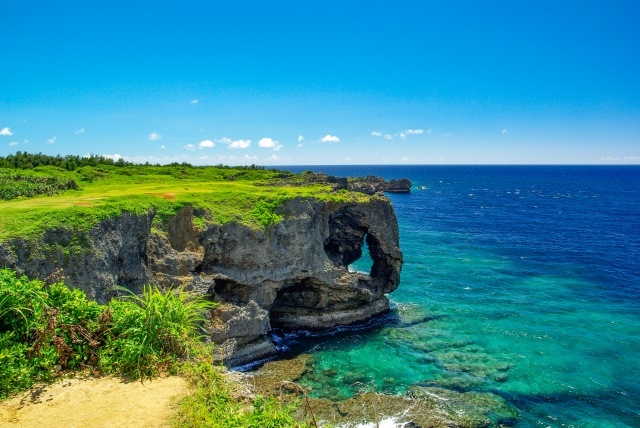
Gyokusendo Cave (Gyokusendo)
Located about 30 minutes by car from Naha Airport, “Okinawa World” houses Gyokusendo, one of the largest stalactite caves in Japan, along with a tropical fruit garden, streets from the Ryukyu Kingdom era, and a habu (snake) museum. Approximately 890 meters of the total 5 kilometers of the cave are open to the public.
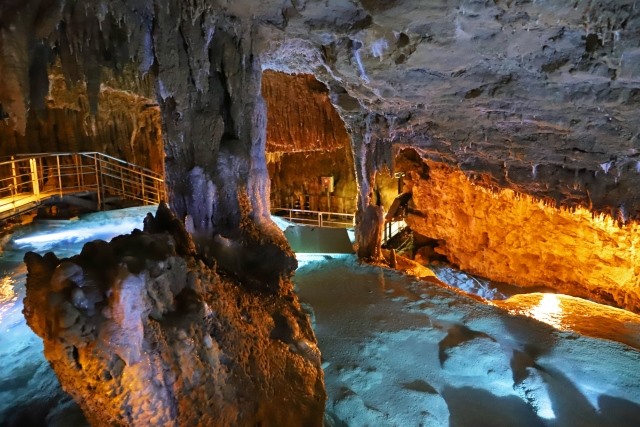
Kerama Islands (Keramashoto)
The Kerama Islands are surrounded by seas with high transparency. Comprising 36 islands, of which five are inhabited, Zamami and Tokashiki Islands are particularly popular for tourism. Zamami Island, a peaceful island accessible by a 50-minute high-speed boat from Naha, offers a slow life experience. Tokashiki Island, only 35 minutes from Naha, is surrounded by the clear “Kerama Blue” sea and has about 20 diving spots.Whale watching is also available in winter.
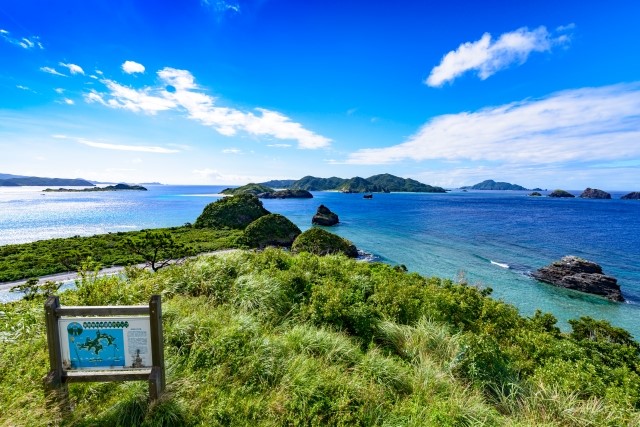
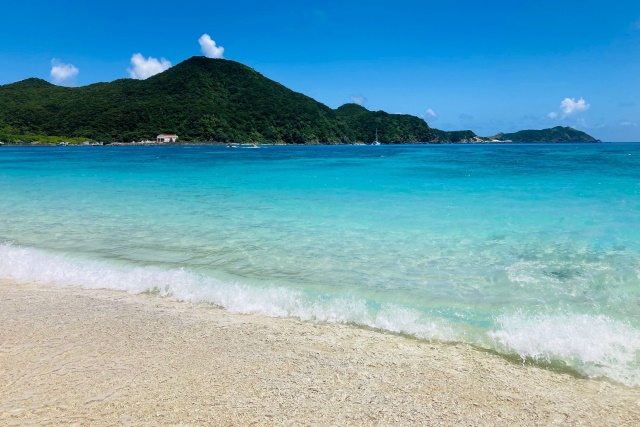
Kume Island (Kumejima)
Kume Island, the fifth largest in Okinawa Prefecture, is located about 100 km west of the main Okinawa Island. Formed from volcanic rock, it features a mountainous terrain but also has “Hatenohama,” a coral sandbar extending over 5 km in the eastern sea. The 2 km long beautiful Eef Beach offers swimming and marine activities.
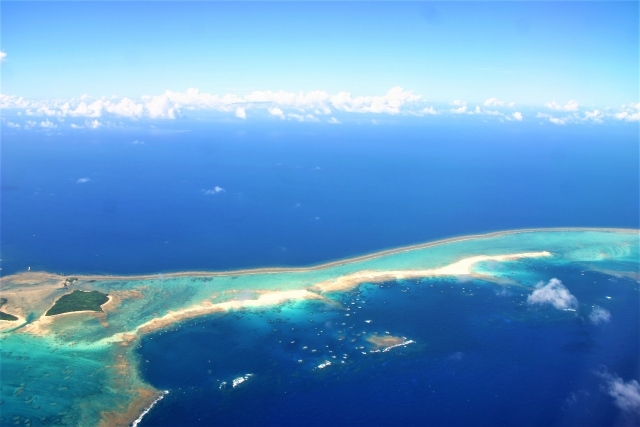
Miyakojima
Miyakojima, formed by the uplift of coral reefs, is flat and lacks rivers, preventing sediment from flowing into the sea, resulting in many beautiful beaches. Yonaha Maehama Beach, also known as Maipamabichi, is famous for its 7 km long white sandy shores and emerald green sea, known as the best in the East. Higashihennazaki Cape, a 2 km long cape, divides the East China Sea and the Pacific Ocean, offering a walking trail with magnificent views and a 10-minute walk to the lighthouse, where a 360-degree panoramic view unfolds.
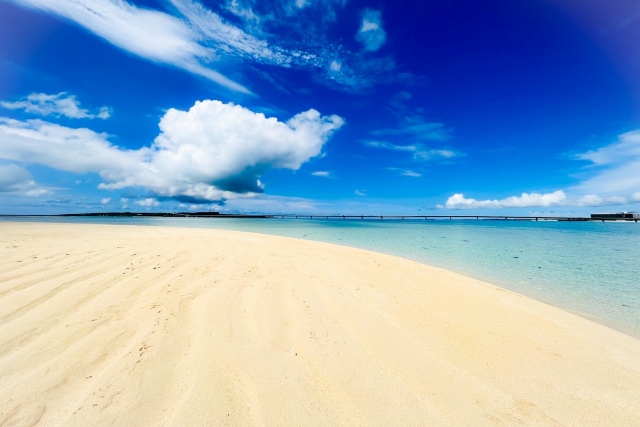
Yonaguni Island (Yonakunijima)
Yonaguni Island, located about 127 km from Ishigaki Island and known as Japan’s westernmost island, is close to Taiwan, which is visible on clear days. The island is known for its cultural exchanges, deepened by the currents of the Kuroshio.
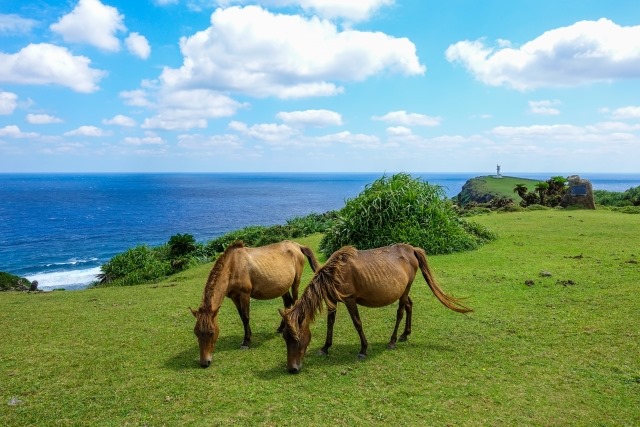
2.Reviews
Okinawa Churaumi Aquarium
The Okinawa Ocean Expo Park, opened in 1976 to commemorate the 1975 Okinawa International Ocean Exposition, houses the Okinawa Churaumi Aquarium, one of the largest in the world. It features a variety of marine life, including 8.7-meter-long whale sharks and manta rays. The aquarium has been breeding whale sharks since 1995, holding the world’s longest record. It attracts about 3 million visitors annually and is located about 2 hours by car from Naha Airport. Outside the aquarium, there are free areas to see dolphin shows, turtles, and manatees.
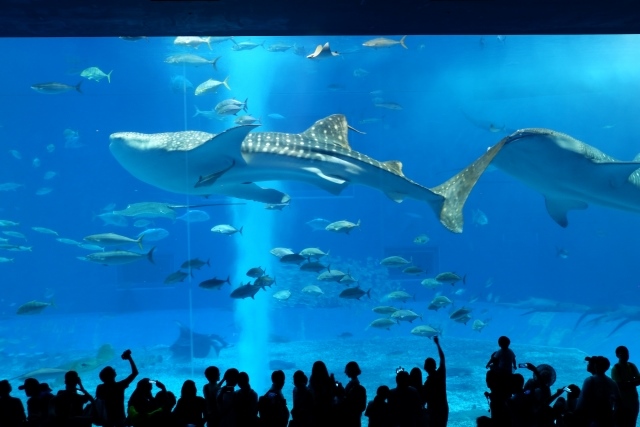
Kokusai Dori (International Street)
Kokusai Dori, located in the center of Naha City, is a 1.6 km main street known as “Miracle Mile.” Rebuilt from ruins after World War II, it is now lined with souvenir shops, Okinawan cuisine restaurants, miscellaneous goods shops, pubs, cafes, and restaurants, bustling with many tourists. Every Sunday, a pedestrian paradise is set up, hosting street performances and creative Eisa dances. Nearby Makishi Public Market offers about 130 shops selling local fresh vegetables, seafood, and specialties. This vibrant area provides visitors with a taste of local culture and unique ingredients.
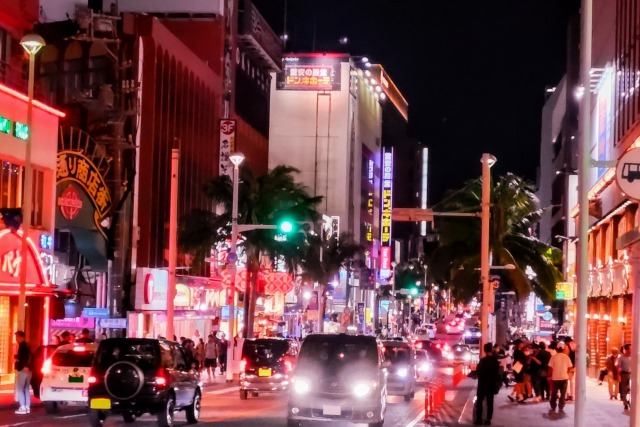
3.Local Food



4.Transportation Information
■ How to Get to Okinawa Prefecture
Okinawa Convention and Visitors Bureau Official Website (Multilingual)
https://www.okinawastory.jp/access/
5.Map Information
